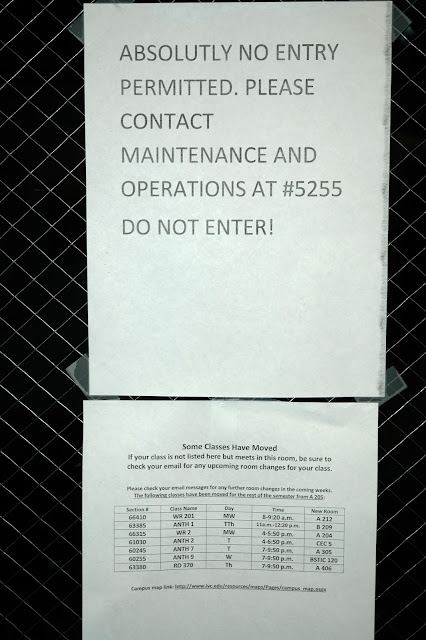Owing to the recent release of the A205 “mold report” and recent DtB posts, there was a fair amount of angry mold buzzage at the college today.
Lots of folks dropped by to offer their two cents. “Sure,” they said, “Glenn cares about bullshit like IVC becoming an earthquake command center [he wants “employees” to “facilitate the continuity of government” post temblor] but he couldn’t care less that toxic stachybotrys mold is growing in a classroom fewer than a hundred yards from his office,” said some wag.
“If there isn’t a photo op in it for him, Glenn doesn’t give a shit about it,” said another.
Some expressed concern: “Hey,” they said, “should I worry about my office? I share a wall with A205.” –Stuff like that.
I still haven’t had a chance to read the report, but I’m told that, according to the report, hideous black mold was found on A205’s “west wall.”
The west wall? I consulted my mental map: “That would be the wall on the internal, not the external wall (i.e., the wall contiguous with other rooms in A200), right? How can that be?”
I consulted the concrete map of the college found on the IVC website. Here’s an even better image:
 |
| There is no "west wall" of A205; rather, there is a northwest wall and a southwest wall |
Since it is nearest to the exterior, the southwest wall is the likely culprit. (No. See update below.) It is about seven feet from my (and Rebel Girl’s) office. (See blue X.) We are separated from the (southern part of the) mold wall by a court or quadrangle area that is about seven feet wide, one of IVC's inexplicable nooks (mirrored by identical pointless nookage on the other side of the building).
Gosh.
It looks like there’s a growing interest among A200 denizens in extending mold inspections beyond A205.
But don’t worry. If that happens, since Glenn and Craig are in charge, no action will be taken for another two months or so.
 |
| From the recently released report |

.bmp)








